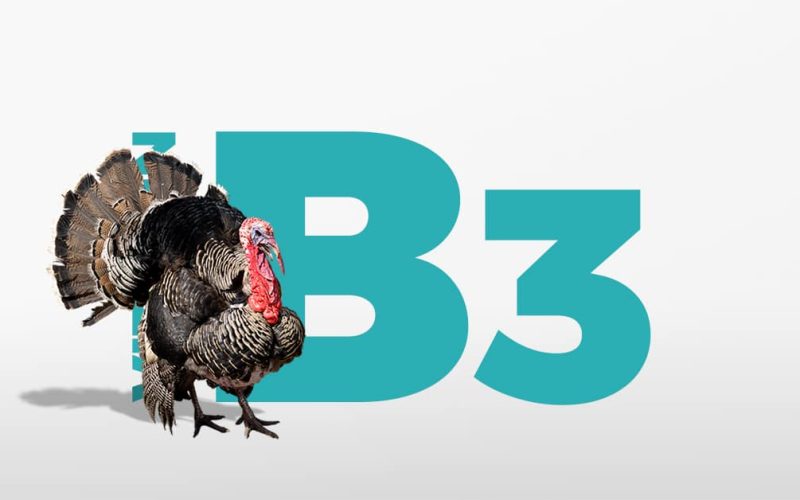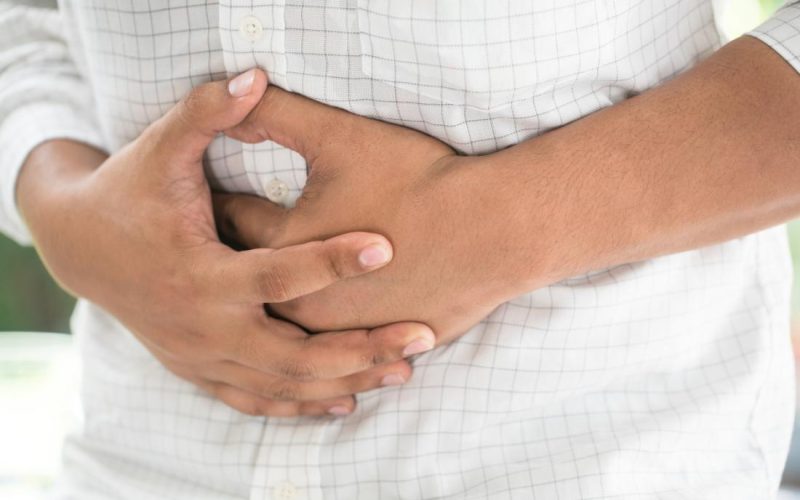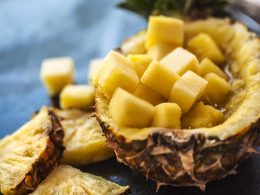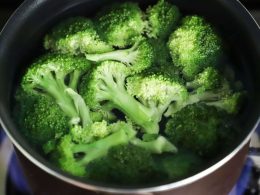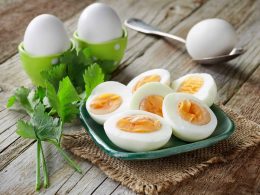Vitamin B-3 is also called niacin and is one of the eight B vitamins. Niacin plays an active role in the conversion of the foods that we eat the energy our body needs. Vitamin B-3 helps the body to use proteins and fats, and it keeps the skin, hair, and nervous system healthy.
There are other possible benefits of getting enough vitamin B-3, and these benefits come from its antioxidative, potential anti-inflammatory, and cholesterol-lowering, properties.
Other names that vitamin B-3 goes by including nicotinic acid, nicotinamide, and vitamin PP, just because it is a way to prevent pellagra.
The human body has its way of balancing itself, so it is no support that our bodies excrete any vitamin B-3 it does not need through urine. Because our body does not store vitamin B-3, people have no choice but to consume it in the food we eat every day.
A balanced and healthful diet should be able to provide a person with all their vitamin B-3 needs. Niacin or vitamin B-3 deficiency is quite uncommon in the United States.
Vitamin B-3 deficiency symptoms
A few decades ago, niacin deficiency was very common around the world, the Southern States of the U.S was hit with this deficiency most especially. Today, however, almost people get enough amount of vitamin B-3 in their diet.
Per information from the Office of Dietary Supplements (ODS), an individual who lacks or get an inadequate amount of vitamin B-3 may experience the following:
- Rough appearance to the skin
- A pigmented rash on any skin area that is exposed to the sun
- Bright red tongue
- Constipation, vomiting, and diarrhoea
- Apathy or fatigue
- Memory loss
- Depression
- Circulatory problems
- Headache
- In severe cases, hallucinations
- A severe lack of vitamin B-3 can result in pellagra. The condition can be fatal.
Factors that can contribute to low levels of niacin include:
Having a diet that is low in tryptophans or dealing with a condition that may reduce the ability of a person’s body to convert tryptophan to vitamin B-3, such as carcinoid syndrome or Hartnup disease.
For example, under nutrition due to anorexia, alcohol use disorder, and inflammatory bowel disease.
A low intake of iron, vitamin B-2, or B-6, as this will most likely reduce the amount of tryptophan that will be converted to niacin
Uses of niacin in medicine
In times past, some individuals would combine statin with vitamin B-3 and use it as a treatment for the control of cholesterol. However, studies into this have created mixed outcomes, and some people have experienced some adverse effects.
For this specific reason, It is not recommended by the American Heart Association and the American College of Cardiology that this combination is used as treatment.
Risks
While the amount of niacin or vitamin B-3 that is found in food usually doesn’t cause any side effects, it has been discovered that taking high doses of any vitamin B-3 supplement can cause some irritation or adverse effects.
These include:
- Constipation
- Nausea
- Flushed or itchy skin
- Vomiting
- Dizziness
- Rash
- Headache
Excess intake of vitamin B-3 may also:
- Cause a reduction in insulin resistance and glucose tolerance.
- Result in eye problems
- Trigger an attack in people with gout
- Increase the risk of liver damage
- Lead to gastrointestinal problems
- Lower a person’s blood pressure, which leads to a loss of balance and high risk of falls
The recommended intake of niacin
It is recommended by the National Institutes of Health (NIH) Dietary Supplement Label Database, that 16 milligrams (mg) of vitamin B-3 be consumed daily for any person who is 4 years of age or older who is consuming a diet of 2,000-calories.
Following this basis, anyone who takes it upon themselves to eat a well-balanced diet will stand a higher chance of consuming enough niacin in the food they eat.
It is not difficult to get Vitamin B supplements as they are available for purchase online. However, people should ensure to check first with a doctor before purchasing a supplement, just to make sure they are safe for use.
Food sources of B-3
The following foods options are wonderful sources of vitamin B-3:
| Grilled chicken breast | Eating a 3-ounce portion of this meat will provide you with 10.3 mg or 52 per cent of DV |
| Beef liver | Eating a 3-ounce portion of beef liver will provide 14.9 mg or 75 percent of an individual’s daily value (DV) |
| Sockeye salmon | Eating a 3-ounce piece should provide you with a total of 8.6 mg or 43 percent of DV |
| Turkey breast | Serving a 3-ounce portion of turkey breast gives 10.0 mg or 50 percent of DV |
| Cooked brown rice | A single cup of this provides 5.2 mg or 26 percent of DV |
| Dry roasted peanuts | A single ounce of these roasted nuts contains about 4.2 mg or 21 percent of DV |
| Enriched breakfast cereal | A single serving of enriched breakfast cereal contains as much as 5.0 mg or up to 25 percent of DV |
Foods that have high tryptophan content are great sources of niacin. The human body needs enough tryptophan to create protein, however, if there is any extra, the body can most likely convert it to niacin.
Pellagra in the United States
In places around the world where rice and corn are the primary sources of nutrition, pellagra remains one of the public health problems they deal with. Corn and rice both have very low levels of vitamin B.
In 1914, the United State’s Public Health Service requested of Dr Joseph Goldberger to pay the South of the country a visit in order to investigate and find a solution to pellagra.
At that time, the rates of pellagra in the southern states were much higher than in the north. Dr Goldberger did an inspection in prisons, orphanages, and psychiatric hospitals.
He discovered that the rate of pellagra among the prisoners, children, and patients were considerably higher than the rate of spread among the staff, and it leads him to the conclusion that pellagra was nothing close to an infection, but it was most probably an illness related to diet.
At the point when staff began to add brewer’s yeast to the diets of the people they were in charge of, it was discovered that all the signs and symptoms of pellagra ceased.
It was not until 1937, that scientists confirmed the connection between niacin and pellagra. Niacin can be used both as a prevention and a cure for pellagra.
Now, a lot has changed medically and in terms of nutrition. Causing pellagra to become rare in the U.S. as the diet of most families and individuals provides them with sufficient vitamin B-3, in part, because of the enrichment of foods with niacin.
Now that you know what Vitamin B-3 is, where to find it, what it does, and the side effects, you have enough reasons to make sure that you and your family get enough of it daily. We will love to interact with you, please leave a comment below and we will respond.



